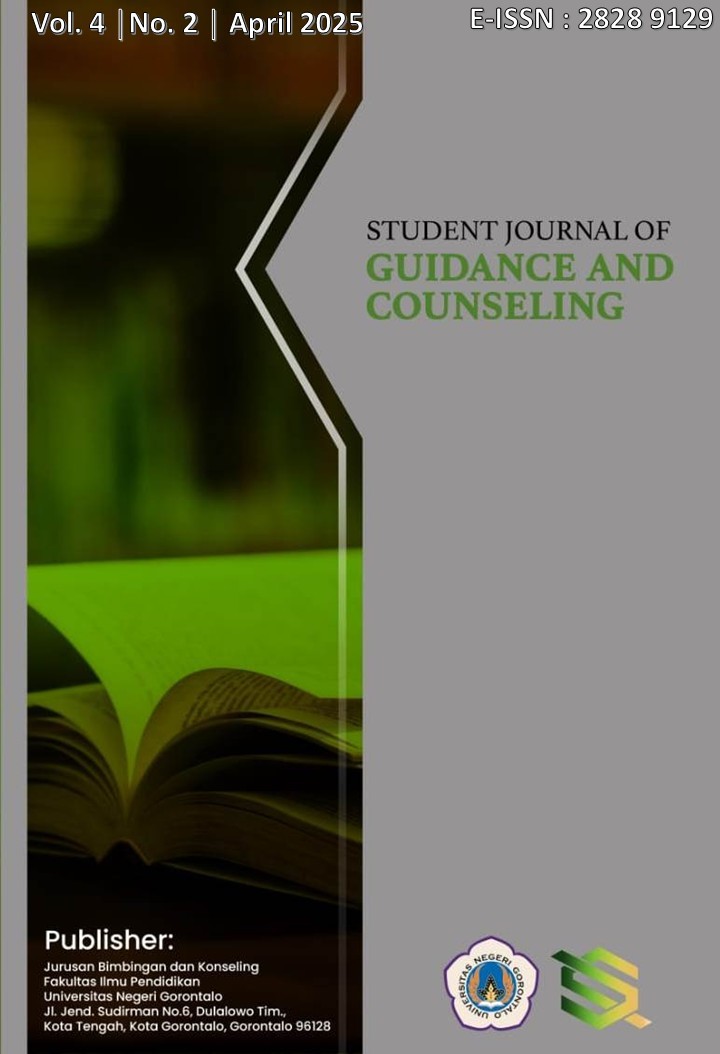Profil Adiksi Media Sosial pada Siswa dan Implikasinya bagi Bimbingan dan Konseling
Abstract
This research was conducted to describe the profile of social media addiction in class X students at SMAN 10 Tasikmalaya. The research method used is a descriptive method with a quantitative approach, using the entire student population of 442 students as the research sample. The research results show that the majority of students spend a lot of time on social media platforms and ignore daily activities. The most dominant aspect of social media addiction is tolerance, followed by returning to old habits (relapse) and withdrawal symptoms. Social media addiction can have a negative impact on students' mental health and productivity. There is a significant difference in the level of social media addiction between male and female students. Therefore, there is a need for guidance and counseling services using Classical Guidance techniques to reduce the level of addiction in students. In addition, it is important to provide education and support to students and involve families and schools in addressing the problem of social media addiction.
References
Ameliola, S., & Nugraha, H. D. (2013, June). Perkembangan media informasi dan teknologi terhadap anak dalam era globalisasi. In Prosiding In International Conference On Indonesian Studies" Ethnicity And Globalization (pp. 362-371).
Andreassen, C. S. (2015). Online social network site addiction: A comprehensive review. Current addiction reports, 2(2), 175-184.
Andreassen, C. S., & Pallesen, S. (2014). Social Network Site Addiction - An Overview, Current Pharmaceutical Design. Psychological Reports, Vol:20, page: 4053-4061.
Arikunto, S. (2010). Prosedur penelitian suatu pendekatan praktek. Bandung : PT. Remaja Rosdakarya.
Cash, H., D Rae, C., H Steel, A., & Winkler, A. (2012). Internet addiction: A brief summary of research and practice. Current psychiatry reviews, 8(4), 292-298.
Chou, C., & Hsiao, M. C. (2000). Internet addiction, usage, gratification, and pleasure experience: the Taiwan college students’ case. Computers & Education, 35(1), 65-80.
Fatmawati, S., Salzabila, R., Rizkitama, G. A., & Nugroho, R. A. (2019). Analisis Berita Hoaks di Korpus Sosial Media Guna Mengembangkan Model" KAPAK HOAKS"(Kemandirian Pembaca Menganalisis Konten Hoaks) Studi Analisis Wacana Kritis. LITE: Jurnal Bahasa, Sastra, dan Budaya, 15(2), 113-135.
Goldberg, I. (1995). Internet addictive disorder (IAD) diagnostic criteria. http://www. psycom. net/iadcriteria. html.
Griffiths, M. (2005). A ‘components’ model of addiction within a biopsychosocial framework. Journal of Substance use, 10(4), 191-197.
Griffiths, M. D. (2015). Adolescent gambling and gambling-type games on social networking sites: Issues, concerns, and recommendations. Aloma: revista de psicologia, ciències de l'educació i de l'esport Blanquerna, 33(2), 31-37.
Gross, E. F. (2004). Adolescent I nternet use: What we expect, what teens report. Journal of applied developmental psychology, 25(6), 633-649.
Gross, E. F. (2004). Adolescent I nternet use: What we expect, what teens report. Journal of applied developmental psychology, 25(6), 633-649.
Haferkamp, N., Eimler, S., Papadakis, A., & Kruck, J.V. (2012). Men are from mars, women are from venus? Examining gender differences in self-presentation on social networking sites. Cyberpschology, Behavior, and Social Networking, 15, 91-98
Hakim, Siti Nurina, Aliffatullah Alyu Raj, and Dara Febrian Chita Prastiwi. "Remaja dan internet." (2017).






